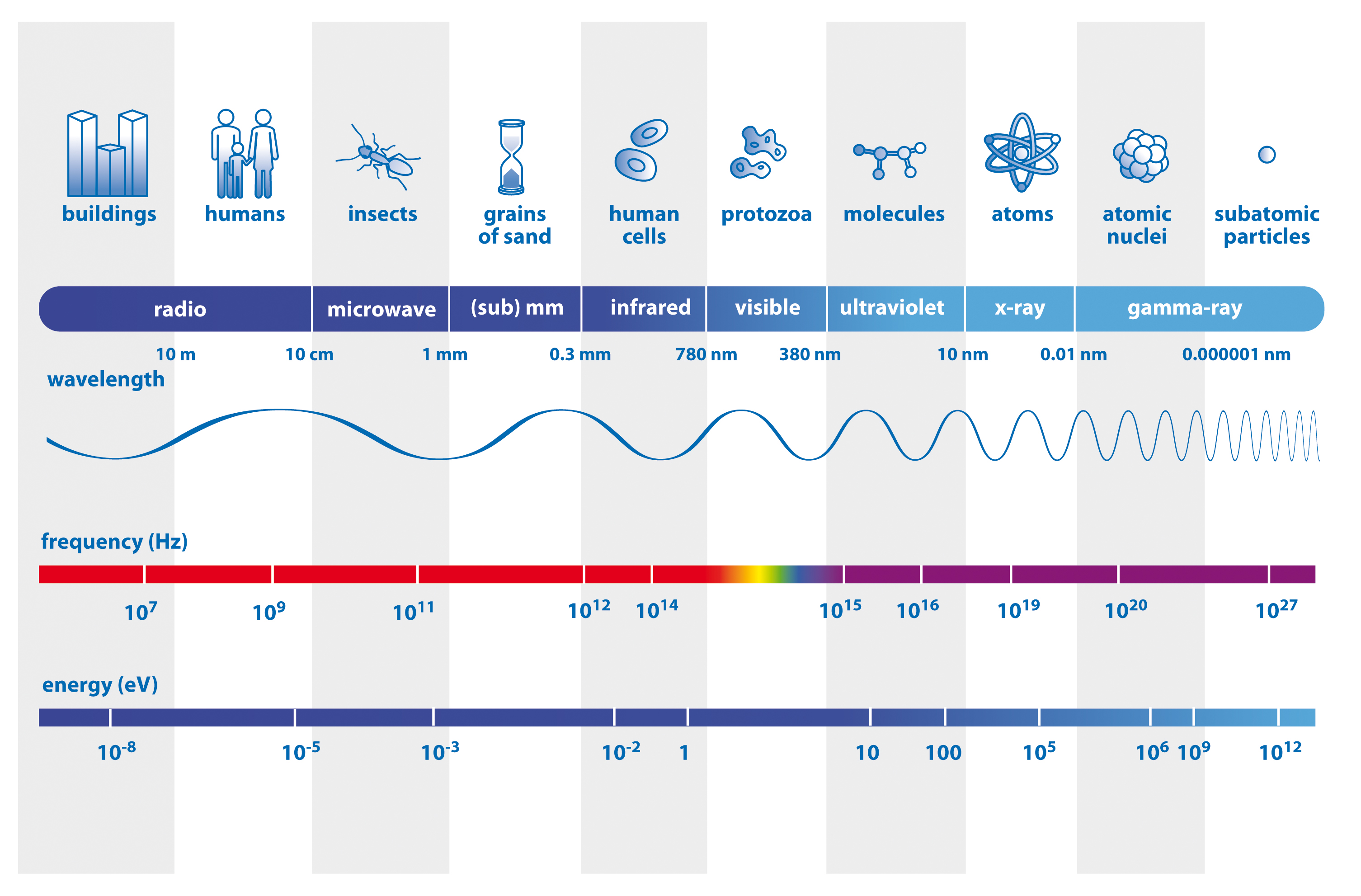Basics
If you’re like me, you are jumping into without a background in electromagnetic physics… So let’s start at the beginning. There are 2 components of a radio: receiver (listen only) and transmitter (send only). A radio radio that both receives and transmits is called a transceiver.
Radio Waves
Radio waves are the medium by which information is sent from transmitter to receiver. Radio waves are electromagnetic radiation… and it’s a lot of physics. But don’t let the radiation word worry you yet! Think of radiation as energy, rather than something that will kill you. Let’s break down electromagnetic waves. Imagine an ocean wave, it oscillates up and down over time. If you used a stop watch to count the seconds between the crest of each wave, you would know how frequently the wave will come. Radio waves are similar, the electromagnetic radiation oscillates up and down just like a wave. So a radio wave is electromagnetic radiation at a specific frequency. The presence and control of those frequencies is how radios communicate.
Radio waves can be visualised! Just as we used the ocean wave analogy earlier, radio waves have a physical property called frequency. Frequency is measured in Herts (Hz) and is the amount of waves that can be completed in one second. One Hz, is one cycle per second. Radio waves cover a portion of the electromagnetic spectrum from 1kHz (1 Kilo Hertz) to 100GHz (100 Giga Hertz)
Radio waves make up a small portion of the Electromagnetic Spectrum, but there are so many other ways we use it such as x-rays, radar, microwaves, visible light, etc. Electromagnetic waves are awesome!
Electomagetic Spectrum: 
Modulation
Modulation is the process, or technique for turning information into radio waves for transmission. There are multiple types of modulation. Perhaps you’ve heard of FM and AM radio? Like the one in your car. AM and FM stand for Amplitude and Frequency Modulation. There are other types of modulation but that’s a topic for it’s own page.
Once you combine a frequency and modulation, you can move data! In the case of Amateur Radio, this is your voice, or other digital data.